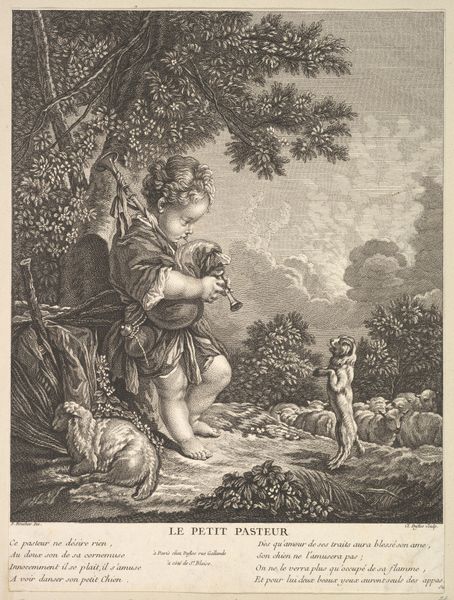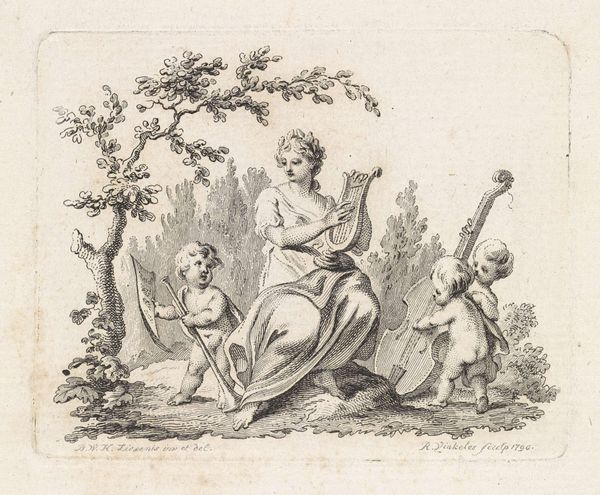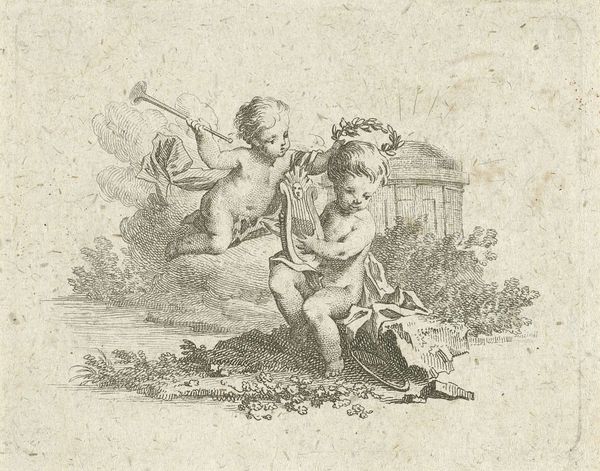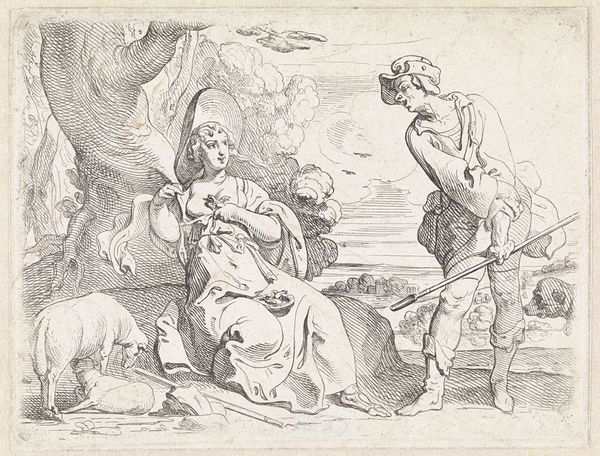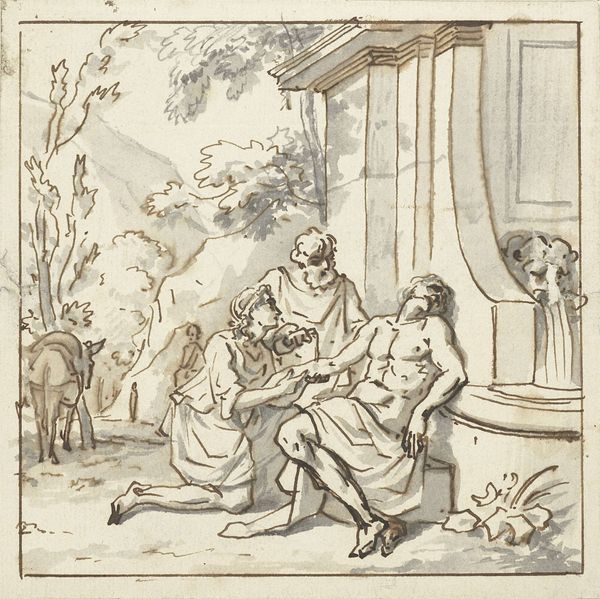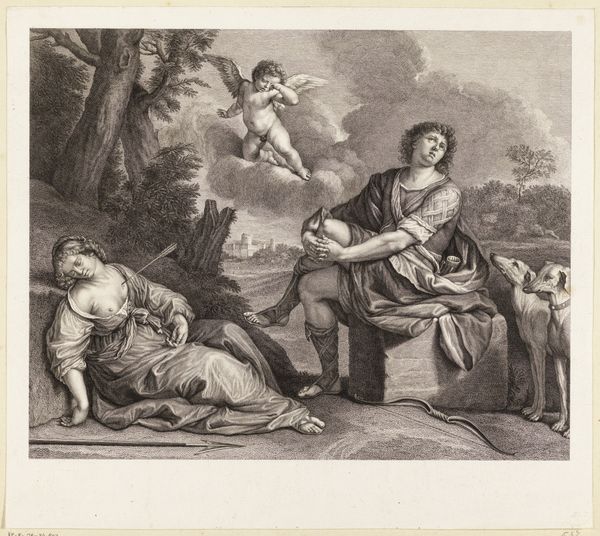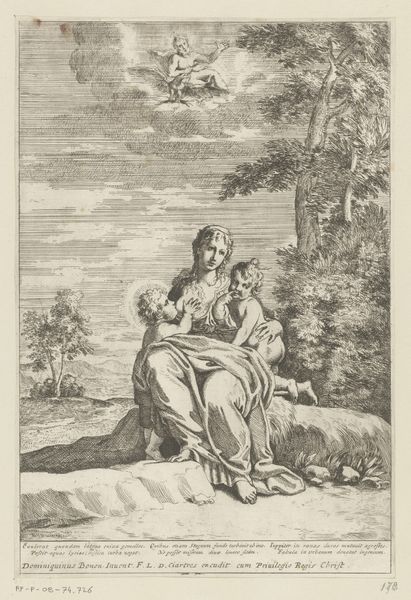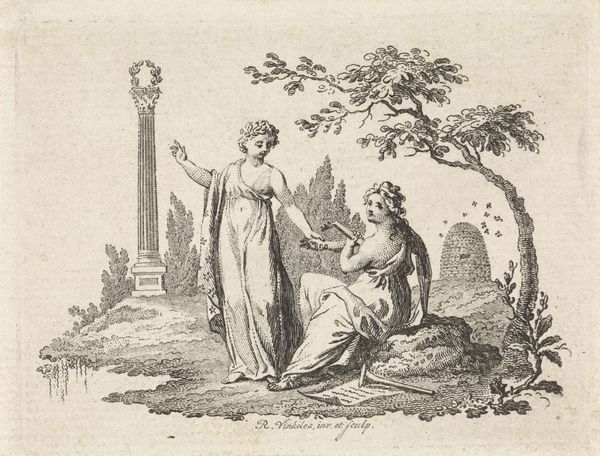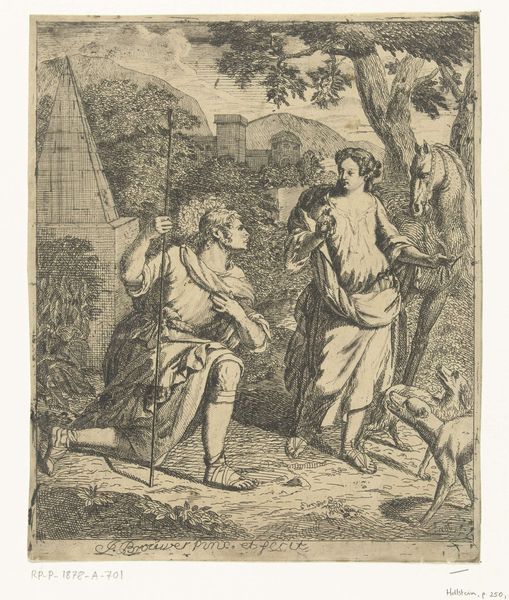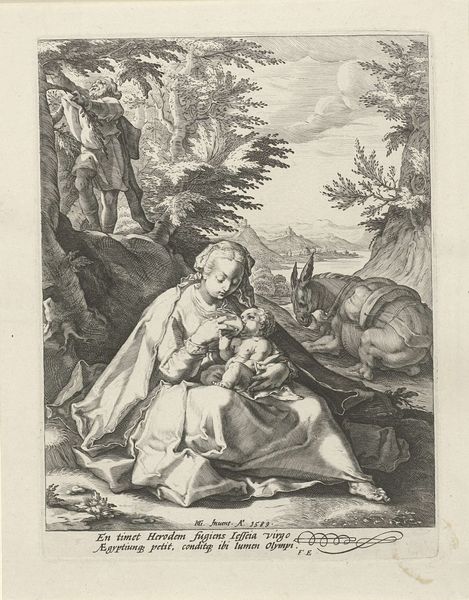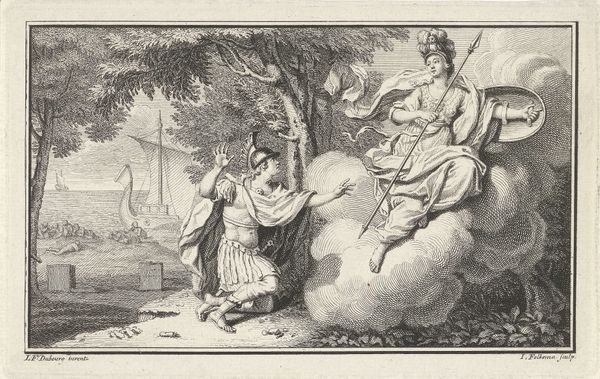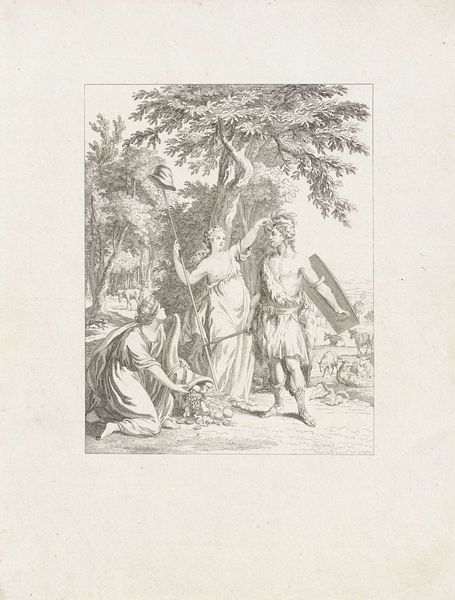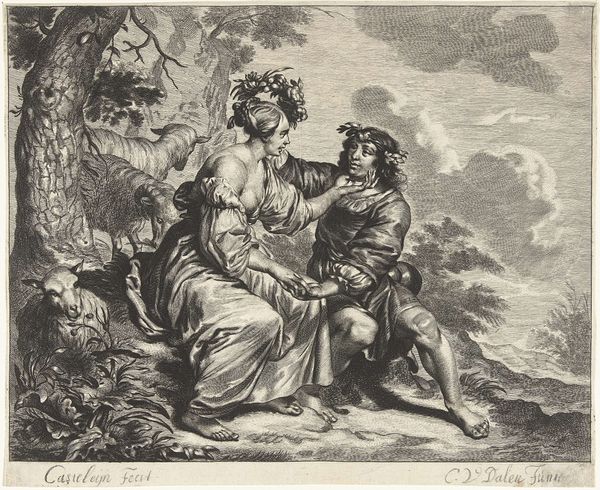
Dimensions: height 98 mm, width 105 mm
Copyright: Rijks Museum: Open Domain
Curator: Welcome. Before us, we have "Erato, Muse of Lyric Poetry," an engraving by Noach van der Meer the Younger, dating somewhere between 1751 and 1822. It's currently held in the Rijksmuseum collection. Editor: It strikes me immediately as classically serene, although the density of the engraving gives it an almost unsettling feeling – a quiet disturbance. Curator: Yes, the hatching creates significant tonal variation. Note how Van der Meer employs linear precision to define Erato, her drapery, and the playful putti surrounding her. Consider, too, the deliberate construction of allegorical elements, a stylistic feature deeply embedded within Baroque art. Editor: I find myself more intrigued by the tangible aspect. I am curious about the paper itself – the source, the quality. An engraving like this demanded skill, of course, but what about the lives of those who made the paper? What kind of labor produced it? Its texture and weight speak to something beyond the pure aesthetics. Curator: An interesting point. The engraving style itself has a semantic dimension, though; it evokes a sense of history and permanence through its very meticulousness. The allegorical scene—Erato with her lyre, surrounded by playful putti, each holding musical scores and medallions—resonates with Neoclassical ideals about artistic patronage. Editor: Agreed. But the materiality suggests that the art was also a commodity. Paper in that era represented resources, trade, the colonial endeavors that shaped it. The crisp lines you mention owe their existence to materials extracted, manufactured, and traded. Curator: A valid interpretation. From a formal perspective, one might argue the contrast between the crisp figure of Erato and the surrounding trees leads the eye, structuring a clear visual hierarchy and reinforces the narrative. Editor: For me, thinking about the work, I also feel compelled to think about what became of the paper—whether it held significance for ordinary people or only existed within rarefied circles of high art. Curator: Your emphasis on context is noted. The composition remains paramount, the subtle gradation of tone imbuing Erato's figure with a striking sense of grace and classical elegance. Editor: It really compels you to look closer once you think of that social side, the other half of art making. I appreciate both approaches. Curator: Indeed, each adds a layer to our comprehension of this exquisite print. Thank you for your illuminating observations.
Comments
No comments
Be the first to comment and join the conversation on the ultimate creative platform.
